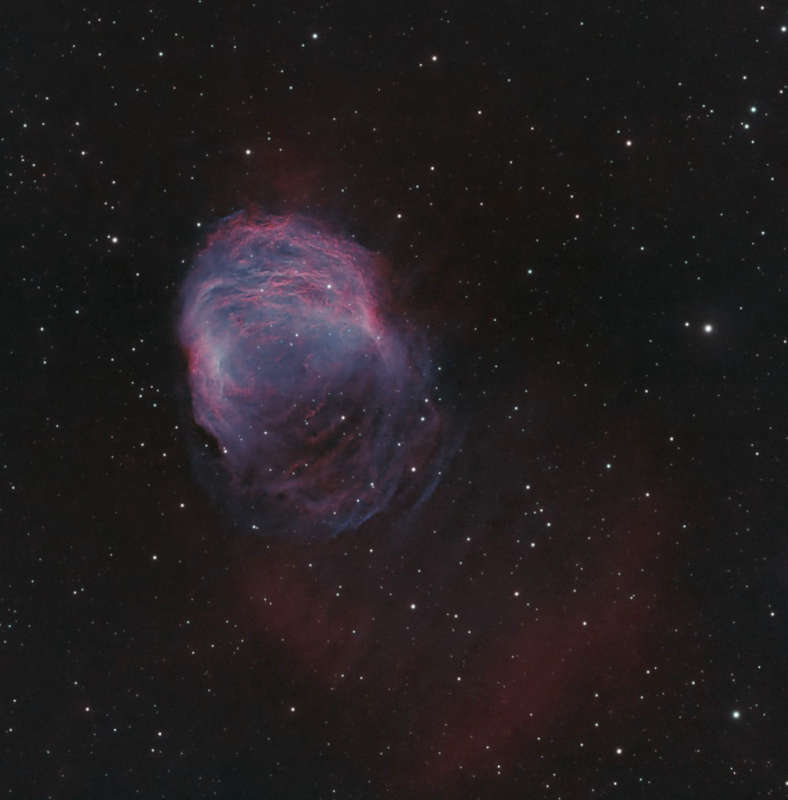Credit & Copyright: Martin Bradley
Chesterfield
Astronomical Society
Explanation:
Braided and serpentine filaments of glowing gas
suggest this nebula's popular name, The Medusa Nebula.
Also known
as Abell 21, this Medusa is an old planetary nebula
some 1,500 light-years away in the constellation Gemini.
Like its mythological
namesake, the nebula is associated with a dramatic transformation.
The
planetary nebula
phase represents a final stage in
the evolution
of low mass stars like the sun as they transform themselves from
red giants
to hot white dwarf stars and in the process shrug off their outer layers.
Ultraviolet
radiation
from the hot star powers the nebular glow.
The Medusa's transforming star is the faint one near the center
of the overall bright crescent shape.
In this deep telescopic view, fainter filaments clearly extend
below and right of the bright crescent region.
The Medusa Nebula is estimated to be over
4
light-years across.
1999 2000 2001 2002 2003 2004 2005 2006 2007 2008 2009 2010 2011 2012 2013 2014 2015 2016 2017 2018 2019 2020 2021 2022 2023 2024 2025 |
Январь Февраль Март Апрель Май Июнь Июль Август Сентябрь Октябрь Ноябрь Декабрь |
NASA Web Site Statements, Warnings, and Disclaimers
NASA Official: Jay Norris. Specific rights apply.
A service of: LHEA at NASA / GSFC
& Michigan Tech. U.
|
Публикации с ключевыми словами:
planetary nebula - Планетарная туманность
Публикации со словами: planetary nebula - Планетарная туманность | |
См. также:
Все публикации на ту же тему >> | |
